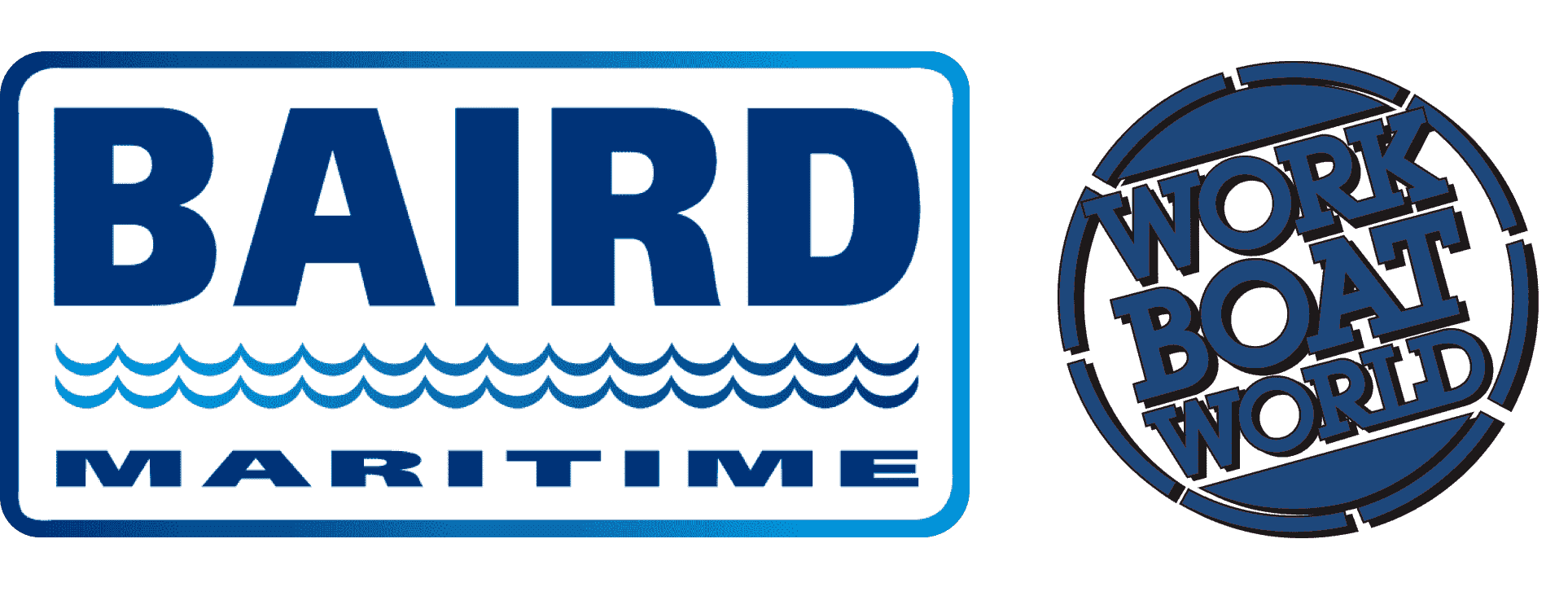VESSEL REVIEW | Hiroshima – Versatile firefighting and rescue boat for Japanese near-shore waters
The city of Hiroshima in Japan recently placed a new firefighting boat into service.
The all-aluminium boat, which is also named Hiroshima, was designed and built by Kiso Shipbuilding. Its duties will include firefighting and search and rescue (SAR), primarily in Hiroshima Bay just off its namesake city.
Capable of quick response to fire incidents
The boat has an LOA of 18.2 metres (60 feet), a beam of four metres (13 feet), a draught of 2.1 metres (6.9 feet), and space for five crewmembers and up to 13 additional personnel such as rescued accident survivors. Two MTU 8M2000M72 engines that each produce 720 kW (970 hp) drive Hamilton HM521 waterjets to propel the vessel to a cruising speed of approximately 25 knots.
"It has quite a selection of equipment in a hull smaller than 20 metres," Kiso Shipbuilding told Baird Maritime. "To satisfy the operator's speed requirements while considering the onboard layout, we needed to develop an entirely new hull form."
The engines are fed by a 3,000-litre (800-gallon) fuel tank while a 300-litre (80-gallon) tank will be used for storing fresh water. Kiso Shipbuilding remarked that waterjet propulsion and larger MTU engines were selected to enable the vessel to easily reach the speeds required by the operator but without increasing the displacement.
"The basic design work on the vessel began in 2021. The main challenge lay in keeping the boat's gross tonnage under 19 in compliance to JCI rules. We were able to overcome this, and the required performance parameters were achieved during sea trials."
The vessel's firefighting equipment includes two ground sweep foam/water monitors, a hydrant, and two pumps. The monitors are fitted on the foredeck and the wheelhouse roof to ensure greater firefighting coverage regardless of the vessel's orientation.
"Also fitted is an oil dispersant discharge system," the builder added. "This is directly connected to a dedicated one-cubic-metre (40-cubic-foot) tank located in the engine room."
The chemical dispersant allows the vessel to also be used for oil spill response.
Fitted out for medical evacuation
An aft transom is available for use by divers during SAR and recovery operations. There is also space on the open aft deck for a Hamaure Marine three-metre (10-foot), outboard-powered inflatable boat for SAR missions in areas that the larger vessel cannot access. The smaller boat is launched into and recovered from the water with the aid of a dedicated davit.
"Hiroshima has been laid out to offer the same selection of equipment found on ambulances," the builder told Baird Maritime.
The vessel therefore has medical service equipment and facilities. Among the more notable of these is a decontamination shower located aft of the wheelhouse for use in the event of CBRNE incidents.
The electronics suite consists of a radar, radios, a compass and a GPS from Furuno, an anemometer, and a thermal imaging camera mounted atop the wheelhouse. The latter sensor enables the crew to conduct firefighting and emergency response missions even in low-visibility conditions such as during nighttime or if an area is engulfed in smoke.
The accommodation spaces are located beneath the wheelhouse and include two berths and a galley. Just aft of the helm station is an air-conditioned space that can accommodate a bed, allowing it to also serve as a patient treatment area.
| Hiroshima | |
| SPECIFICATIONS | |
| Type of vessel: | Firefighting and rescue vessel |
| Classification: | JCI |
| Flag: | Japan |
| Owner: | City of Hiroshima, Japan |
| Operator: | City of Hiroshima, Japan |
| Designer: | Kiso Shipbuilding, Japan |
| Builder: | Kiso Shipbuilding, Japan |
| Hull construction material: | Aluminium |
| Superstructure construction material: | Aluminium |
| Deck construction material: | Aluminium |
| Length overall: | 18.2 metres (60 feet) |
| Beam: | 4.0 metres (13 feet) |
| Draught: | 2.1 metres (6.9 feet) |
| Main engines: | 2 x MTU 8M2000M72, each 720 kW (970 hp) |
| Propulsion: | 2 x Hamilton HM521 waterjets |
| Auxiliary engine: | Northern Lights M944W3 |
| Cruising speed: | 25 knots |
| Radar: | Furuno |
| Radios: | Furuno |
| Compass: | Furuno SC-50 |
| GPS: | Furuno GP-3500 |
| Other electronics: | Anenometer |
| Other equipment installed: | Oil dispersant discharge system; dive transom; decontamination shower |
| Firefighting equipment: | 2 x foam/water monitors; hydrant; 2 x pumps |
| Rescue boat: | Hamaure Marine |
| Fuel capacity: | 3,000 litres (800 gallons) |
| Freshwater capacity: | 300 litres (80 gallons) |
| Accommodation: | Berths; galley; treatment area |
| Crew: | 5 |
| Passengers: | 13 |
| Operational area: | Hiroshima Bay, Japan |


